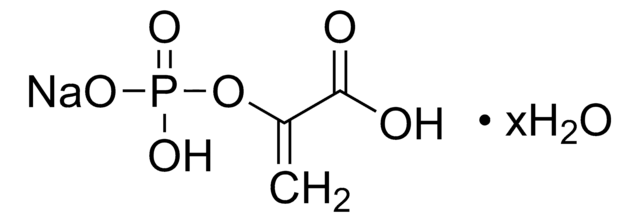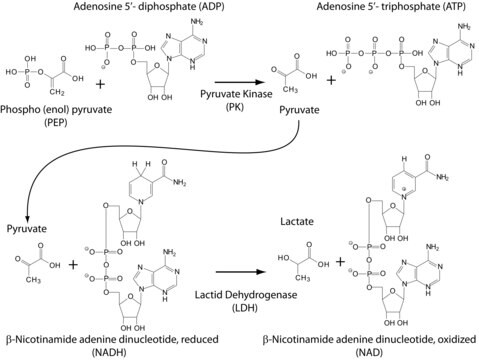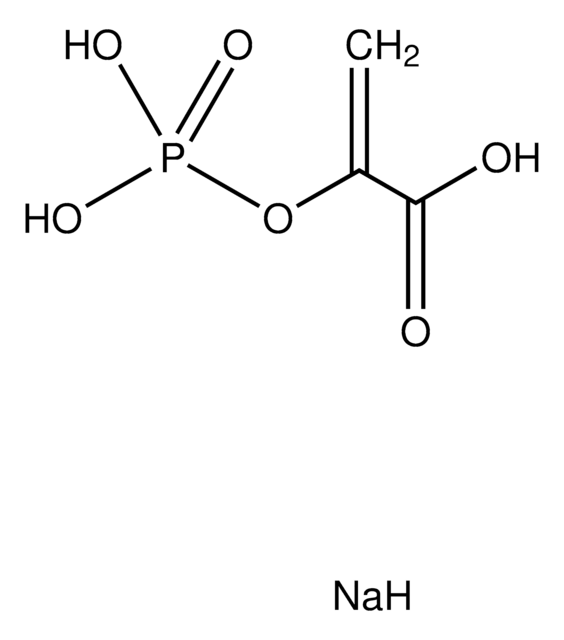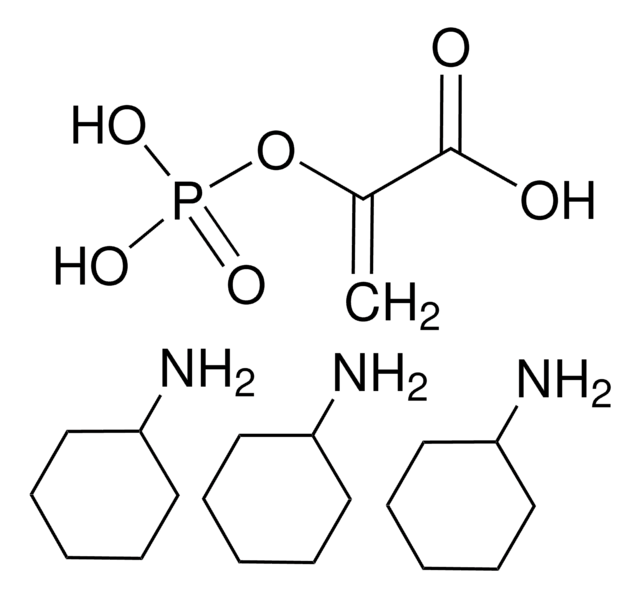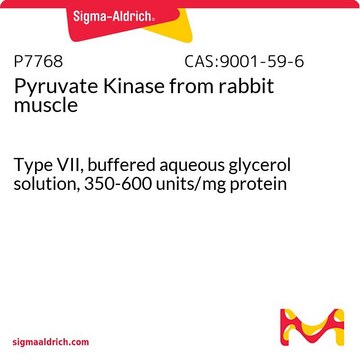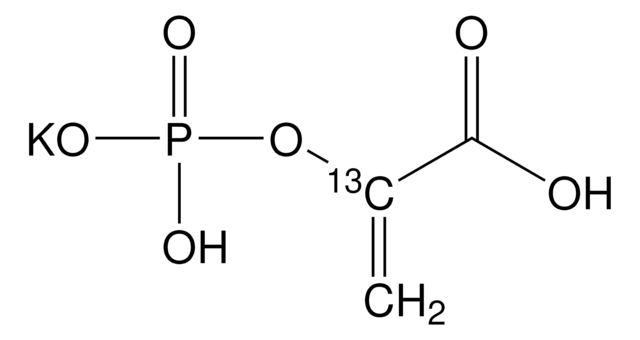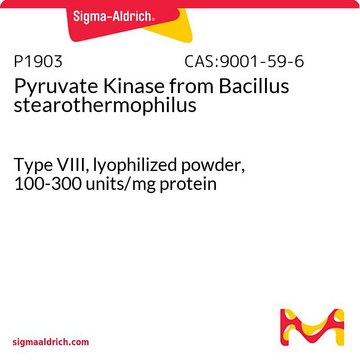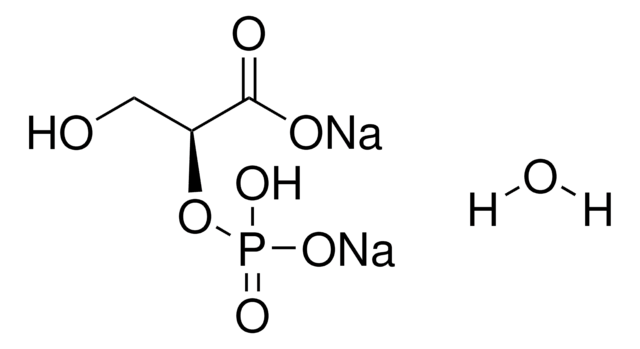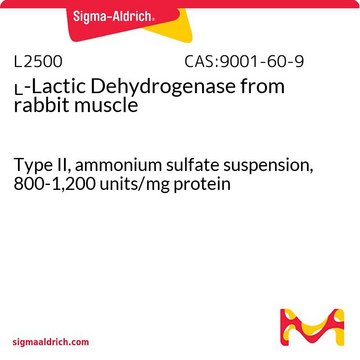P7127
Phosphoenolbrenztraubensäure Monokaliumsalz
≥97% (enzymatic), powder
Synonym(e):
2-(Phosphonooxy)-2-propensäure Monokaliumsalz, Mono-kaliumphosphoenolpyruvat, PEP-K
About This Item
Empfohlene Produkte
product name
Phosphoenolbrenztraubensäure Monokaliumsalz, ≥97% (enzymatic)
Qualitätsniveau
Assay
≥97% (enzymatic)
Form
powder
Löslichkeit
water: 100 mg/mL, clear, colorless
Lagertemp.
−20°C
SMILES String
[K+].OC(=O)C(=C)OP(O)([O-])=O
InChI
1S/C3H5O6P.K/c1-2(3(4)5)9-10(6,7)8;/h1H2,(H,4,5)(H2,6,7,8);/q;+1/p-1
InChIKey
SOSDSEAIODNVPX-UHFFFAOYSA-M
Suchen Sie nach ähnlichen Produkten? Aufrufen Leitfaden zum Produktvergleich
Allgemeine Beschreibung
Anwendung
- zur Beibehaltung einer konstanten Konzentration an Adenosintriphosphat (ATP) zum aktiven Aufbau von Gelsystemen
- als Bestandteil von Assaypuffern für den In vitro-ATPase-Assay
- als Stammlösung für optische Einfangtests
Biochem./physiol. Wirkung
Lagerklassenschlüssel
13 - Non Combustible Solids
WGK
WGK 3
Flammpunkt (°F)
Not applicable
Flammpunkt (°C)
Not applicable
Persönliche Schutzausrüstung
Eyeshields, Gloves, type N95 (US)
Analysenzertifikate (COA)
Suchen Sie nach Analysenzertifikate (COA), indem Sie die Lot-/Chargennummer des Produkts eingeben. Lot- und Chargennummern sind auf dem Produktetikett hinter den Wörtern ‘Lot’ oder ‘Batch’ (Lot oder Charge) zu finden.
Besitzen Sie dieses Produkt bereits?
In der Dokumentenbibliothek finden Sie die Dokumentation zu den Produkten, die Sie kürzlich erworben haben.
Kunden haben sich ebenfalls angesehen
Artikel
Review the 10 steps of glycolysis in the Embden-Meyerhof-Parnas glycolytic pathway. Easily compare reaction stages and buy the enzymes for your life science research.
We presents an article about the Warburg effect, and how it is the enhanced conversion of glucose to lactate observed in tumor cells, even in the presence of normal levels of oxygen. Otto Heinrich Warburg demonstrated in 1924 that cancer cells show an increased dependence on glycolysis to meet their energy needs, regardless of whether they were well-oxygenated or not.
Unser Team von Wissenschaftlern verfügt über Erfahrung in allen Forschungsbereichen einschließlich Life Science, Materialwissenschaften, chemischer Synthese, Chromatographie, Analytik und vielen mehr..
Setzen Sie sich mit dem technischen Dienst in Verbindung.

